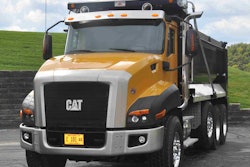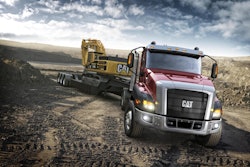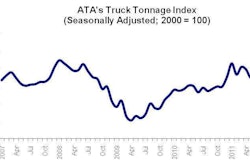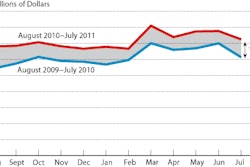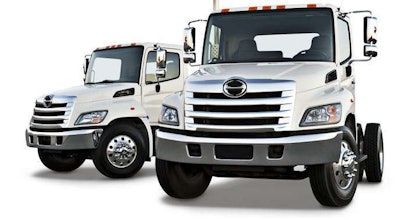
While the quality of medium-duty trucks has improved during the past five years, overall customer satisfaction has declined during the same period, according to the J.D. Power and Associates 2011 U.S. Medium-Duty Truck Customer Satisfaction Study released Thursday, Sept. 29.
The study finds that incidence of owner-reported problems decreased by 26 percent between 2007 and 2011 on average – an indication of higher quality – but that during the same timeframe, owner satisfaction declined by 27 index points (on a 1,000-point scale) among trucks that have been in service 13 to 18 months.
“On the surface, it seems contradictory that owner satisfaction would decline at the same time that owners reported fewer problems,” says Brent Gruber, senior manager of the commercial vehicle practice at J.D. Power and Associates. “Yet, when we dig deeper, we find that it’s not the number of problems, but the nature of the problems that are causing owners to be less satisfied with their trucks.”
The study finds that manufacturers have made improvements during the past five years in wheel/tire, braking system and cab/body quality, resulting in a decline in the total number of problems. However, the number of engine problems in trucks that have been in service 13 to 18 months increased by 13 problems per 100 vehicles (PP100) between 2007 and 2011.
“Declining engine quality is putting downward pressure on satisfaction,” Gruber says. “Electronic control module calibration and regeneration system problems now impact 46 percent of medium-duty truck customers who experience an engine-related problem.”
Within the product index, six factors are used to determine overall satisfaction: engine, warranty, cost of operation, cab and body, ride/handling/braking and transmission. The study also measures satisfaction with services received from an authorized truck dealer. Six factors comprise the service index: service facility, service quality, service adviser, service initiation, service delivery and service price.
The study also finds that Class 5 trucks have the highest quality levels in 2011, averaging 76 PP100; by comparison, Class 6 trucks average 181 PP100, and Class 7 trucks average 144 PP100. The 2011 U.S. Medium-Duty Truck Customer Satisfaction Study is based on responses from 1,037 primary maintainers of 2010 model-year Class 5-7 conventional cab medium-duty trucks; the study was fielded between June and July.
While medium-duty trucks typically are not considered to be environmentally friendly vehicles, the study finds that many truck owners are thinking “green.” Although implementation of green technology is not widespread in the commercial trucking industry, the study finds that 16 percent of owners say they are “certain” or “practically certain” that they would buy a truck from a green-rated manufacturer rather than a manufacturer without a green rating.
“Green ratings and technology are areas where manufacturers can differentiate themselves from the rest of the industry,” Gruber says. “Manufacturers that invest in green technology and widely incorporate it in their trucks will have a considerable advantage in a very competitive market.”
With a score of 807, Hino ranks highest in customer satisfaction within the conventional truck segment for a second consecutive year. Hino performs well across all factors driving satisfaction, particularly in engine satisfaction and overall quality. Freightliner (762) and Ford (757) follow in the product index rankings. Freightliner experiences the greatest improvement from 2010, increasing by 12 index points primarily due to higher engine and cost of ownership satisfaction.
“Medium-duty trucks are sophisticated vehicles that are often used for more demanding applications,” says Gruber. “Between the complexity of the truck and engine and the rugged use, there is a lot that may go wrong with these trucks. However, manufacturers are continuously striving to improve their overall quality, and they’re meeting that objective. Now they must focus on reducing the number of engine-related problems while simultaneously trying to meet the demands of new fuel efficiency and emissions standards.”

